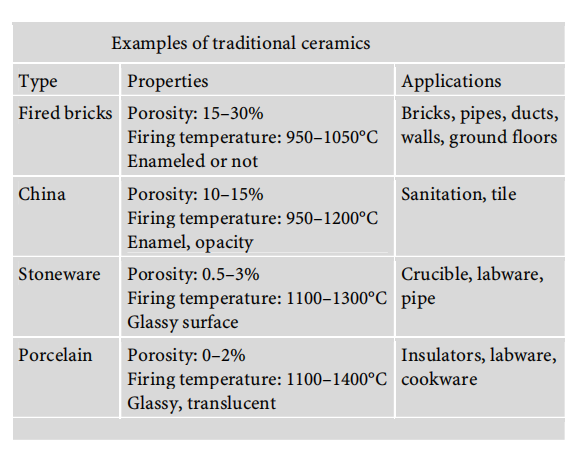CERAMICS Chemische Eigenschaften,Einsatz,Produktion Methoden
Beschreibung
Ceramics are synthetic materials made by sintering of bauxite and kaolinite clay. After processing, the final material mineralogical composition consists of a mixture of mullite and corundum. Sometimes less common ceramics are also used, e.g., carborundum, stabilized cubic zirconia, other oxides, and silicates.
Definition
Useful high-melting
inorganic materials. Ceramics include
silicates and aluminosilicates, refractory
metal oxides, and metal nitrides, borides,
etc. Pottery and porcelain are examples of
ceramics.
synthetische
The classical procedure for preparing traditional ceramics consists of the following operation sequence: raw material selection and preparation (i.e., grinding, mixing), forming (e.g.,
molding, extrusion, slip casting, and die pressing), drying, prefiring operations (i.e., glazing), firing, and postfiring operation (e.g., enameling, cleaning, and machining). The common classes of traditional ceramics are whitewares (e.g., stoneware, china, and porcelain),
glazes, porcelain enamels, high-temperature refractories, mortars, cements, and concretes.
Allgemeine Beschreibung
Traditional ceramics are those obtained only from the firing of clay-based materials. The
common initial composition before firing consists usually of a clay mineral (i.e., phyllosilicate minerals such as kaolinite, montmorillonite, or illite), fluxing agents or fluxes [e.g.,
feldspars: K-feldspars (orthoclases) and Ca-Na-feldspars (plagioclases)], and filler materials
(e.g., silica, alumina, magnesia). The traditional ceramics can be prepared using two main
groups of clays: kaolin or china clays made from the phyllosilicate kaolinite and, to a lesser
extent, micas, but free of quartz; and ball clays containing a mixture of kaolinite, montmorillonite, illite, and micas. Examples of traditional ceramics:

Industrielle Verwendung
Ceramics are inorganic, nonmetallic materialsprocessed or consolidated at high temperature.Ceramics, one of the three major material families,are crystalline compounds of metallic andnonmetallic elements. The ceramic family islarge and varied, including such materials asrefractories, glass, brick, cement and plaster,abrasives, sanitaryware, dinnerware, artware,porcelain enamel, ferroelectrics, ferrites, anddielectric insulators. There are other materialsthat, strictly speaking, are not ceramics, but thatnevertheless are often included in this family.These are carbon and graphite, mica, and asbestos.Also, intermetallic compounds, such as aluminidesand beryllides, which are classified asmetals, and cermets, which are mixtures of metalsand ceramics, are usually thought of asceramic materials because of similar physicalcharacteristics to certain ceramics.
CERAMICS Upstream-Materialien And Downstream Produkte
Upstream-Materialien
Downstream Produkte

